Lectrosonics DCHR Handleiding
Lectrosonics
Receiver
DCHR
Bekijk gratis de handleiding van Lectrosonics DCHR (16 pagina’s), behorend tot de categorie Receiver. Deze gids werd als nuttig beoordeeld door 21 mensen en kreeg gemiddeld 4.5 sterren uit 11 reviews. Heb je een vraag over Lectrosonics DCHR of wil je andere gebruikers van dit product iets vragen? Stel een vraag
Pagina 1/16

DCHR
Digital Camera Hop Receiver
INSTRUCTION MANUAL
Rio Rancho, NM, USA
www.lectrosonics.com
Fill in for your records:
Serial Number:
Purchase Date:
Quick Start Steps
1) Install receiver batteries and turn power on (pg. 5).
2) Set compatibility mode to match the transmitter (pg.
10).
3) Set or sync frequency to match transmitter (see
page 10).
5) Set encryption key type and sync with transmitter
(see page 11).
6) Choose analog or digital (AES3) output (see page
10).
7) Verify RF and audio signals are present.

DCHR
LECTROSONICS, INC.
2
NOTE: This equipment has been tested and found to comply with the limits for a Class B digital device, pursuant to
part 15 of the FCC Rules. These limits are designed to provide reasonable protection against harmful interference
in a residential installation. This equipment generates, uses and can radiate radio frequency energy and, if not
installed and used in accordance with the instructions, my cause harmful interference to radio communications.
However, there is no guarantee that interference will not occur in a particular installation. If this equipment does
cause harmful interference to radio or television reception, which can be determined by turning the equipment off
and on, the user is encouraged to try to correct the interference by one or more of the following measures:
• Reorient or relocate the receiving antenna.
• Increase the separation between the equipment and receiver.
• Connect the equipment into an outlet on a circuit different from that to which the receiver is connected.
• Consult the dealer or an experienced radio/TV technician for help.
Table of Contents
Quick Start Steps 1 ................................................................
DCHR Digital 2-Channel Receiver 3 ......................................
Smart Tuning (SmartTune™) 3 ................................................
Encryption 3 ...........................................................................
RF Front-End with Tracking Filter 3 ........................................
Panels and Features 4 .............................................................
Battery Status LED 5 .............................................................
RF Link LED 5 ........................................................................
IR (infrared) Port 5 .................................................................
USB Port 5 .............................................................................
Battery Compartment.......................................................... 5
Audio Jack and Pin Configuration 5 .......................................
Keypad and LCD Interface 5 ..................................................
Installing Batteries 6 ...............................................................
System Setup Procedure 6 .....................................................
DCHR LCD Menu Map 8 ..........................................................
Menu Item Descriptions 10 .....................................................
RF Setup Menu 10 ...................................................................
Audio Setup Menu 10 ..............................................................
Sync/Encryption Menu 10 ......................................................
Tools/Settings 11 .....................................................................
Accessories 13 ........................................................................
Specifications 13 .....................................................................
Service and Repair 14 .............................................................
Returning Units for Repair 14 ................................................

Digital Camera Hop Receiver
Rio Rancho, NM 3
DCHR Digital Stereo/Mono Receiver
The DCHR Digital Receiver is engineered to work
alongside the DCHT transmitter to form the Digital
Camera Hop system. The receiver is also compatible
with the M2T unencrypted and M2T-X encrypted digital
stereo transmitters, and the D2 Series mono digital
transmitters, including the DBu, DHu, and DPR. De-
signed to be camera mountable and battery powered,
the receiver is ideal for location sound and televised
sports, along with many other applications. The DCHR
employs advanced antenna diversity switching during
digital packet headers for seamless audio. The receiver
tunes across a wide UHF frequency range.
The DCHR has a single audio output jack that can be
configured as 2 independent balanced line level out-
puts or as a single 2 channel AES3 digital output.
The headphone monitor output is fed from a high-
quality stereo amplifier with power available to drive
even inefficient headphones or earphones to sufficient
levels for noisy environments. An intuitive interface and
high resolution LCD on the unit provide users with a
quick read on the status of the system.
The DCHR also employs 2-way IR sync, so settings
from the receiver can be sent to a transmitter. This
way, frequency planning and coordination can be done
quickly and confidently with on-site RF information.
Smart Tuning (SmartTune™)
A major problem facing wireless users is finding clear
operating frequencies, especially in RF saturated
environments. SmartTune™ overcomes this problem
by automatically scanning all the frequencies available
in the unit, and tuning to the frequency with the lowest
RF interference, significantly reducing setup time.
Encryption
The DCHR provides AES 256-bit, CTR mode encryp-
tion. When transmitting audio, there are situations
where privacy is essential, such as during professional
sporting events. High entropy encryption keys are first
created by the DCHR. The key is then synced with an
encryption capable transmitter/receiver via the IR port.
The audio will be encrypted and can only be decoded
and heard if both the transmitter and the DCHR have
the matching key. Four key management policies are
available.
RF Front-End with Tracking Filter
A wide tuning range is helpful in finding clear frequen-
cies for operation, however, it also allows a greater
range of interfering signals to enter the receiver.
The UHF frequency band, where almost all wireless
microphone systems operate, is heavily populated by
high power TV transmissions. The TV signals are im-
mensely more powerful than a wireless microphone or
portable transmitter signal and will enter the receiver
even when they are on significantly different frequen-
cies than the wireless system. This powerful energy
appears as noise to the receiver, and has the same
effect as the noise that occurs with extreme operating
range of the wireless system (noise bursts and drop-
outs). To alleviate this interference, high-quality front-
end filters are needed in the receiver to suppress RF
energy below and above the operating frequency.
The DCHR receiver employs a selective frequency,
tracking filter in the front-end section (the first circuit
stage following the antenna). As the operating fre-
quency is changed, the filters re-tune into six different
“zones” depending on the selected carrier frequency.
BLOCK BLOCK BLOCK BLOCK BLOCK BLOCK
470 MHz 614 MHz
In the front-end circuitry, a tuned filter is followed by
an amplifier and then another filter to provide the se-
lectivity needed to suppress interference, yet provide a
wide tuning range and retain the sensitivity needed for
extended operating range.
Product specificaties
| Merk: | Lectrosonics |
| Categorie: | Receiver |
| Model: | DCHR |
Heb je hulp nodig?
Als je hulp nodig hebt met Lectrosonics DCHR stel dan hieronder een vraag en andere gebruikers zullen je antwoorden
Handleiding Receiver Lectrosonics

27 Februari 2025
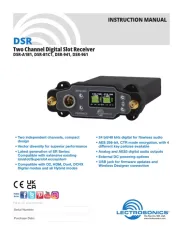
26 Februari 2025
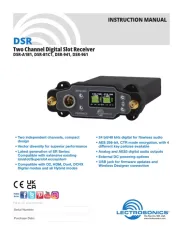
26 Februari 2025
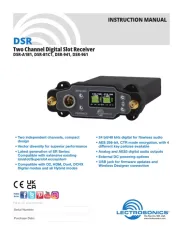
26 Februari 2025
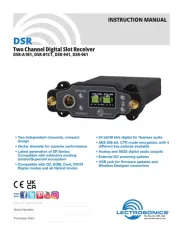
26 Februari 2025

16 November 2023

16 November 2023

16 November 2023

16 November 2023

16 November 2023
Handleiding Receiver
- Anthem
- Niles
- Fosi Audio
- AVMATRIX
- Xtrend
- Sandberg
- CE Labs
- Alto
- Arcam
- Teufel
- Vonyx
- Taramps
- Smartwares
- Ecler
- Edwards Signaling
Nieuwste handleidingen voor Receiver
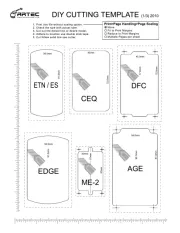
30 Juli 2025
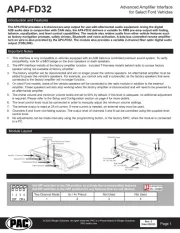
29 Juli 2025
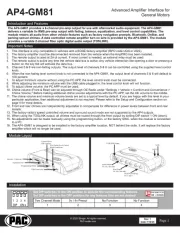
29 Juli 2025
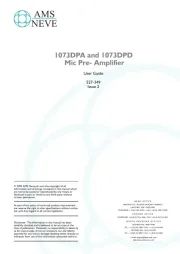
29 Juli 2025
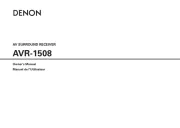
29 Juli 2025
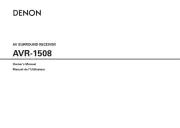
29 Juli 2025
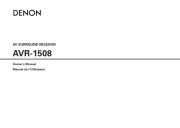
29 Juli 2025
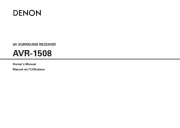
29 Juli 2025
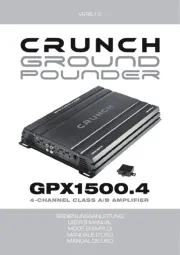
29 Juli 2025
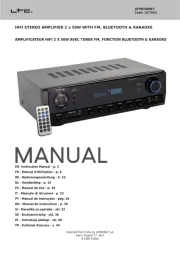
28 Juli 2025